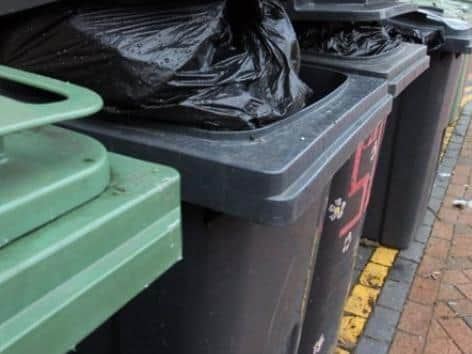More than a third of Hertfordshire household ‘rubbish’ could be recycled, suggests data
and live on Freeview channel 276
More than 40 per cent of household ‘rubbish’ in Hertfordshire could be recycled, according to new analysis.
The provisional data from the latest ‘waste compositional analysis’ survey was reported to a meeting of the Hertfordshire Waste Partnership, on Monday (January 25).
Advertisement
Hide AdAdvertisement
Hide AdIt focusses on the contents of ‘residual’ waste bins collected from across the county, last autumn.


And provisional results suggest that around 44 per cent of the contents could have been recycled or composted.
They show that 28 per cent (that’s more than a quarter) of the household ‘residual’ waste collected from the kerbside was food waste.
And around 14 per cent was made up of ‘dry recyclables’, that include plastic, cans and glass.
Advertisement
Hide AdAdvertisement
Hide AdIn response to the data, partnership development manager Duncan Jones said there had been “some really good progress” over the past five years.
And the data does show that a greater proportion of glass, cardboard, paper, plastic and metal is being recycled, compared to similar analysis five years ago.
But Mr Jones said there was still a lot to do, pointing particularly to the provision of waste food collection services.
As part of the survey, a specialist team scrutinised the contents of a number of ‘residual’ waste bins, taken from nine of the 10 Hertfordshire districts.
Advertisement
Hide AdAdvertisement
Hide AdThe contents of each bin was then sorted into different categories of waste – and weighed.
And the breakdowns can then be used to identify what residents are throwing away and whether items are being put in the right bins.
Watford did not take part as it had conducted its own survey in 2019. But some of the data from its own survey has been included.
According to the provisional data, just over half of the contents of the residual bins in Stevenage could have been recycled – with around 15 per cent made up of dry recyclables and more than 35 per cent of ‘organics’.
Advertisement
Hide AdAdvertisement
Hide AdAnd in seven of the nine districts analysed the proportion of ‘organics’ and dry recyclables combined was in excess of 40 per cent.
In Dacorum the amount of recyclable or compostable material found in the bins was slightly below 40 per cent.
And in St Albans that figure was the lowest overall, at around 33 per cent.
The findings of the compositional analysis will be used by the partnership to identify future priorities, with respect to waste awareness and behavioural change work.
Advertisement
Hide AdAdvertisement
Hide AdAnd comparison to previous studies may also be used to highlight trends and possible operational changes that need to be considered.
Following the meeting, partnership chair Cllr Terry Hone , who is executive member for community safety and waste management at the county council, said: “Waste compositional studies are carried out by local authorities across the UK on a regular basis and are vitally important in understanding the type of wastes being generated by residents.
“Not only does the analysis provide a breakdown of the materials being collected it also highlights important issues such as the amount of dry recyclables and compostable organic wastes still in the residual waste.
“In turn this identifies areas the HWP needs to focus on with respect to its waste awareness and behavioural change work.
Advertisement
Hide AdAdvertisement
Hide Ad“Comparing results to previous studies also helps to highlight trends and possible operational changes that need to be considered.”
According to the provisional data from the ‘waste compositional analysis’, food waste accounts for between 18 per cent and 36 per cent of the contents of the residual bins in districts and boroughs across the county.
That has decreased in most areas in the past five years – except in Welwyn Hatfield, Three Rivers and Hertsmere.
But cutting it further is already being talked about as a priority for future years.
Advertisement
Hide AdAdvertisement
Hide AdThe survey found that levels of food waste in residual bins were highest in Welwyn Hatfield and Stevenage – where it accounted for 36.2 and 35.2 per cent of the bins’ contents respectively.
And it was lowest in St Albans, Dacorum and Hertsmere – accounting for 18.3, 22.1 and 22.9 per cent respectively.
According to the provisional data the percentage of food waste collected from the kerbside as ‘residual’ waste was: St Albans 18.3; Dacorum 22.1; Hertsmere 22.9; North Herts 27.6; Broxbourne 28; Three Rivers 29.3; East Herts 29.9; Watford 30.5; Stevenage 35.2; Welwyn Hatfield 36.2.